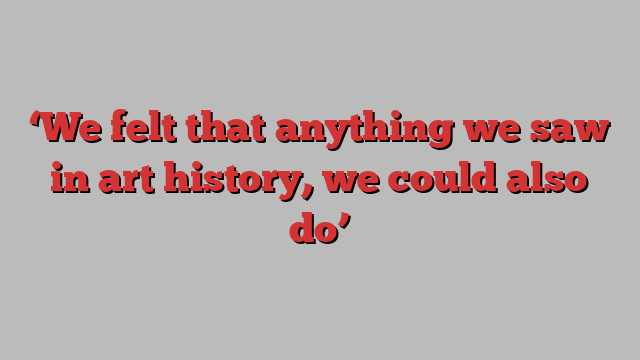
Unlock the Editor’s Digest for free
Roula Khalaf, Editor of the FT, selects her favourite stories in this weekly newsletter.
“It is definitely physically gruelling — we’re not even that old, but you can get fresco burnout,” says Rosie Hastings, sitting with partner Hannah Quinlan in their studio in the vast Thames-Side complex in Woolwich, south-east London, where their lives and art intertwine as one. Two large, recently completed frescoes, painted on to lime plaster on wooden panels, hang on the studio walls, ready for their forthcoming solo exhibition at Arcadia Missa gallery in London.
Their chosen method is demanding — the morning’s division of labour has Hastings preparing the ground (plaster with lime) and Quinlan mixing the paints for the day from scratch. The painting has to be done before the plaster dries, meaning long hours in the studio. “The adrenaline is addictive — it’s so magical, it’s the agony and the ecstasy, that’s our life!” says Hastings.
Their technique might be drawn from antiquity, but the subjects feel more personal and present. In one image, a queer couple wearing billowy angel wings are locked in a late-night discussion, seemingly walking home from a party. There are unsettling details on closer inspection — white crosses made of sticky tape on the windows of the building in the background are based on an archival photograph of the fascist demagogue Oswald Mosley’s house, the crosses an attempt to protect the windows from shattering during second world war bombing. Mosley has been a figure the duo has returned to in allusive ways — Hastings’ grandfather belonged to the radical Jewish anti-fascist 43 Group and was imprisoned after a failed attempt to murder one of Mosley’s Blackshirts. “It’s a sticky bit of history,” Hastings says.
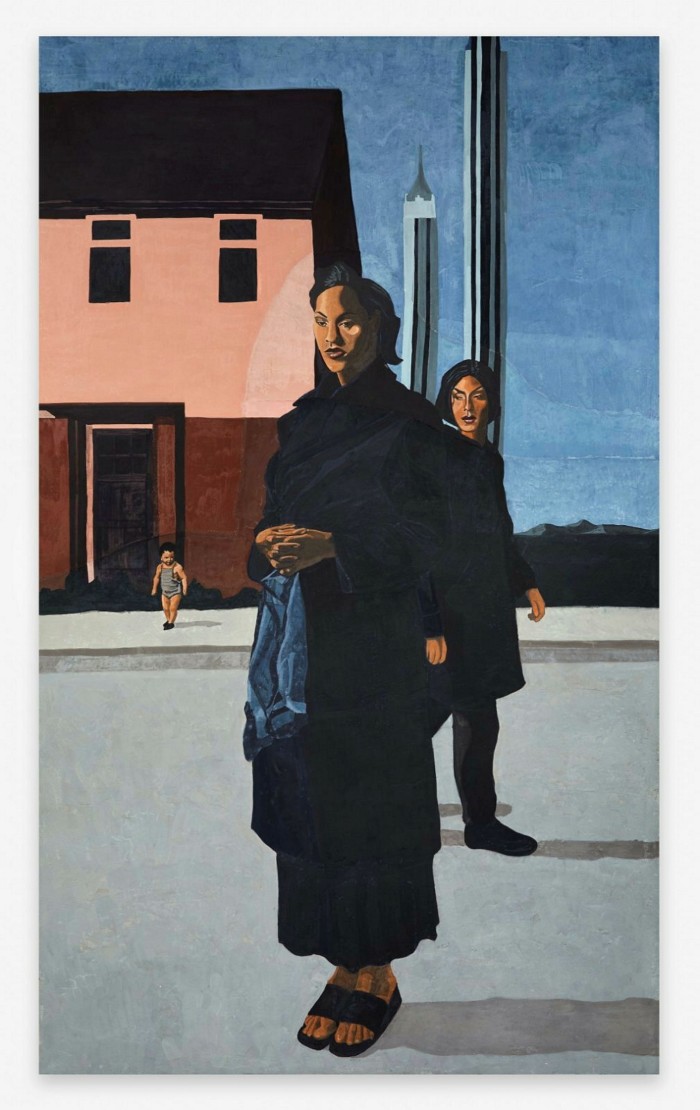
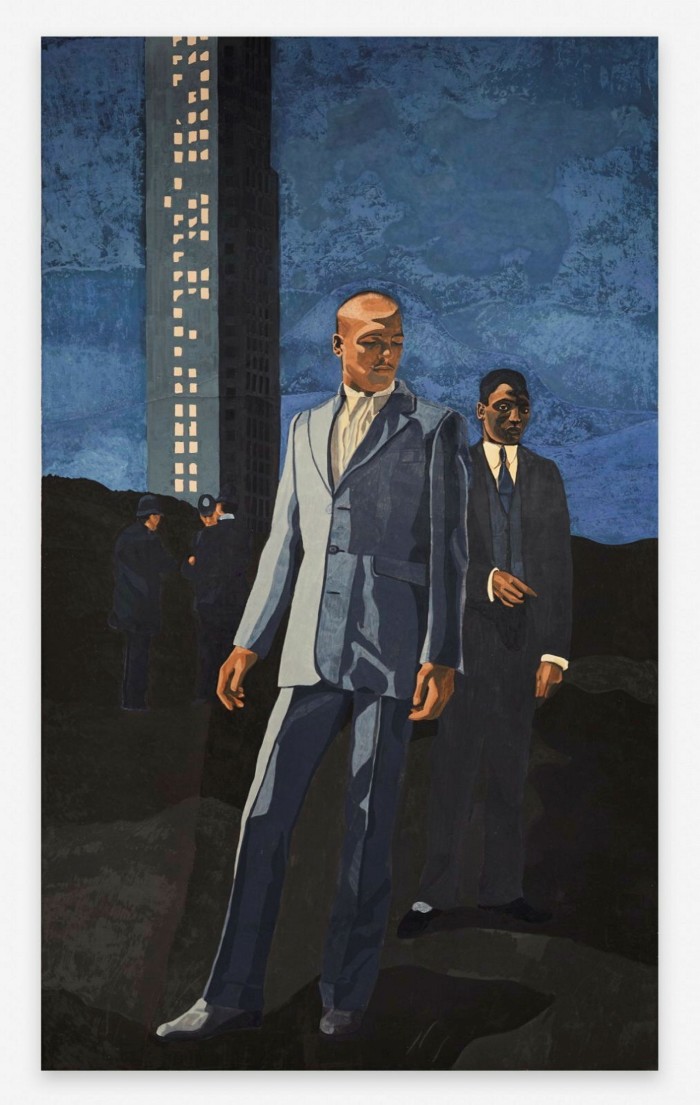
Quinlan and Hastings, both 33, met 11 years ago as students at Goldsmiths and have been inseparable since. At first, their practice involved hosting parties and reading groups in their bedroom, which evolved to drawing together. They now work symbiotically from concept to execution. “Sometimes I look at something and think, ‘Did I do that?’” Hastings says. “When we started working together, we had some ego problems, we had to fight for space — but now we’ve thrown our egos in the bin.”
The focus of Quinlan and Hastings’ frescoes has been street scenes of figures exploring the power dynamics of class, gender and sexuality as they play out and are performed in public spaces. Adhering to the tradition of frescoes, their complex and dynamic scenes are coded with symbols, queering and questioning the dominant moral order of things.
Perhaps predictably, it was an encounter with the Sistine Chapel that turned them on to fresco. “We were 23, but we felt that anything we saw in art history, we could also do,” Quinlan reflects. “I guess that’s the power of art — the sublime moment.” They were promptly on the case to demystify and learn the art form by searching for a teacher online — and they ended up in a barn in a forest near Toulouse, painting into the night under the strict instruction of Fleur Kelly, one of the only remaining teachers of fresco painting. In fact, she had stopped teaching — but the pair proved persuasive enough. “Fleur taught us discipline and rigour, and that you need a hardcore, punk attitude if you decide to dedicate yourself to this,” Hastings explains.
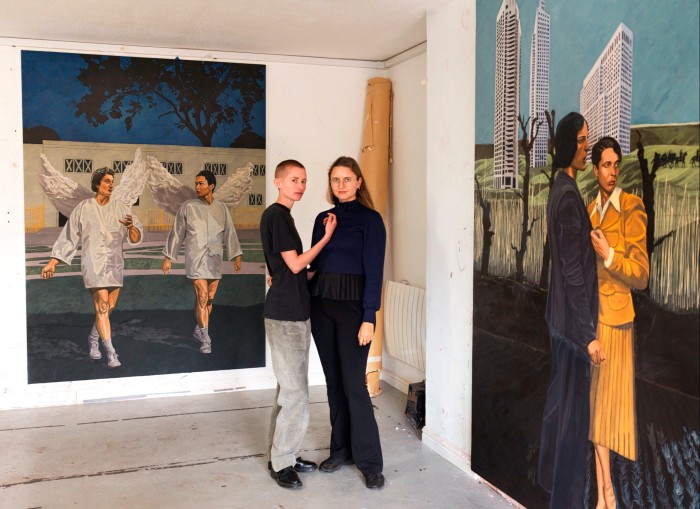
Quinlan and Hastings’ latest public work, however, adopts another ancient technique favoured for public art through the ages — mosaic. Their piece for Art on the Underground, a scheme that commissions work for the Tube network, will be unveiled on November 28 at St James’s Park station in the heart of London. “Angels of History” will be installed for posterity in the atrium of the Grade I-listed station at 55 Broadway, joining the ranks of sculptures by Modernist masters, including Jacob Epstein and Henry Moore, that are carved into the building’s stone facade.
Quinlan and Hastings translated their work into mosaic for the first time as it proved more durable and better suited for the dirt and vibrations of a train station. The limitations and constraints of mosaic, as well as its Roman roots, however, felt natural to the fresco artists. They still produced the designs as frescoes on a 1:1 scale before having them fabricated by Gary Drostle, a mosaic specialist who is also based in south-east London.
“Angels of History” features six panels arranged as two triptychs. As ever, each work is richly coded and leaps through the history and myths of centuries. “Given the location of St James’s, between Whitehall, where the future is decided, and the royal palaces, where history is preserved, we wanted to create something to watch over people,” says Hastings. The duo took cues from the watchful presence of gothic gargoyles, designed to ward off evil spirits; Michelangelo’s oracular Sibyls in the Sistine Chapel; and angel figures in the Old Testament, both intimidating and protective.

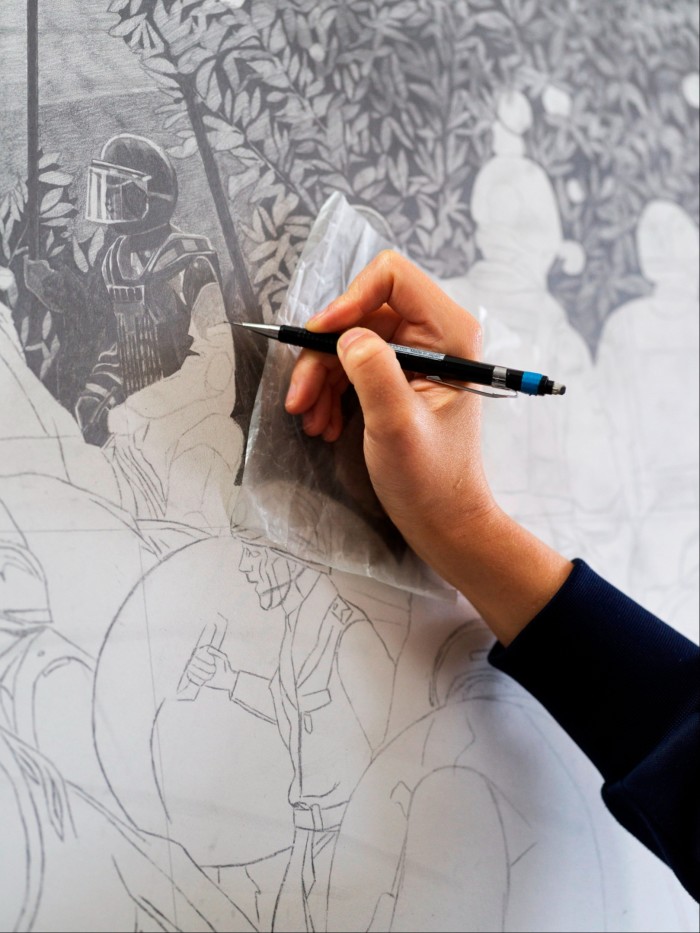
To either side of these angels, landscapes conjure a more fearsome and dystopian atmosphere — a tree ravaged by the weather, ominous open grassy plains, Art Deco skyscrapers and postwar council houses, as well as a model of 55 Broadway itself. These images also allude to Walter Benjamin’s ideas on the “angel of history” from his 1940 essay “Theses on the Philosophy of History” — a figure who is propelled by the forward motion of progress, characterised by Benjamin as a storm, while looking back at the debris and destruction left in its wake.
The gaze of Quinlan and Hastings’ angels too is directed away, towards something we can’t see. As commuters hurry by below, they are poised, with excitement and uncertainty, to see what will emerge from the rubble of the past.
November 1-December 17, arcadiamissa.com